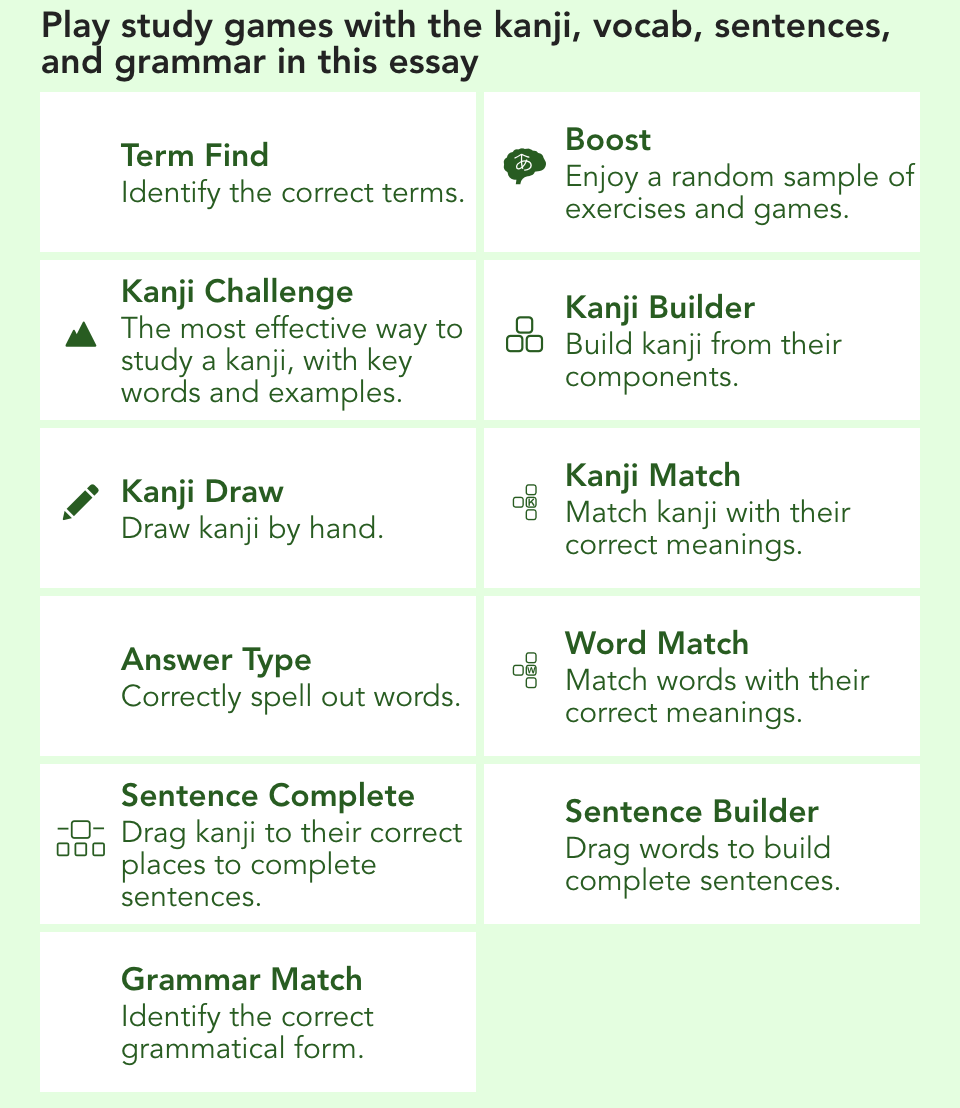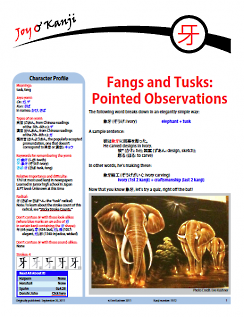牙
tusk, fang; "tusk" radical
Kanji 1972
Thank you for visiting this Character Home Page. Below you'll find a synopsis of the essay. If you wish to read the full text, the PDF of the essay is available for purchase to the right.
Tusks and fangs may seem unrelated to our lives, but without elephant tusks, we wouldn't have ivory carvings, the color ivory white, a country named Ivory Coast, or the horrible song "Ebony and Ivory." Most of that is also true in Japanese, because 牙 appears in all those terms (excluding the song title). In fact, the Japanese rely on 牙 to an even greater extent; they also use it in expressions about showing hostility, preparing for a fight, and acting in evil ways. On top of that, 牙 is a radical in three Joyo kanji, and it's part of the Shin-Joyo set (the group of characters added to the Joyo set in 2010).
Revision notes:
June 7, 2021:
- p. 2: Replaced the Henshall etymology of 牙.
- pp. 9 and 10: Added Henshall etymologies for 3 characters containing 牙.
- p. 10: Added a link to the Kanshudo games.
Dec. 19, 2014: Corrected a different part of the end of the photo caption on page 2 by changing "toys" to "'soft vinyl' toys."
Aug. 17, 2012: Corrected the end of the photo caption on page 2.



Comments